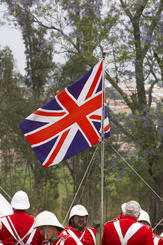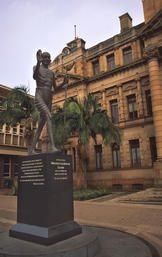Be Ready to Forgive

It was not so much the start of the Second Anglo-Boer War in 1899 that had the most profound effect on the country's political and cultural landscape, as the 'peace of coming together' treaty that was signed at Melrose House on 31 May 1902, in Pretoria.
The Peace of Vereeniging marked the end of one of the bitterest wars in modern history, by which time some 24 000 black men, women and children, 22 000 British soldiers, about 20 000 Boer women and children, and around 7 000 Boer soldiers were dead.
It could have been the opportunity for the British victor's to implement a peace that was fair to all South Africans.
However, racked by guilt about the war, they submitted to Boer demands for a society based on white racial superiority instead. The most poignant of all war (or, more correctly, peace) monuments is one designed by Sir Edwin Lutyens that can be seen at Johannesburg Zoo, outside the military museum in Saxonwold.
The words of acting President Schalk Burger, uttered at the signing, echo the more recent Truth and Reconciliation hearings: 'We must be ready to forgive and forget'.
Mahatma Gandhi

On a train to Pretoria (first class) a white passenger complained about sharing the compartment with an Indian, and Mohandas Karamchand Gandhi was thrown off when he refused to transfer to third class. So began the political education of the world's most famous political agitator against racial inequality.
Gandhi created the Natal Indian Ambulance Corps during the Second Anglo-Boer War whom the British used as stretcher bearers. Gandhi and the corps served at the Battle of Spion Kop, which consisted of 300 free Indians and 800 indentured labourers. In 1894 he helped form the Natal Indian Congress, the first organisation to oppose white rule.
In 1913 he helped organise a strike and a protest march of Indian miners and railway workers from Natal to the Transvaal, which in turn spurred him on to organise the great march of non-violent resistance (satyagraha) in India that led to independence from Britain some 30 years later.